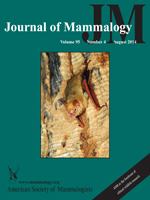Species delimitation using mitochondrial sequences aims to identify species as morphological expertise and biodiversity both decline. Species delimitation in animals relies completely or in part on 2 criteria: genetic distance and reciprocal monophyly. Using coalescent simulations of populations experiencing continuous and interrupted gene flow we show that these commonly applied criteria incur both high false-positive and high false-negative error rates in species delimitation when dispersal is sex biased, as it is in most mammals. The combination of distance- and topology-based criteria will incur false-positive error rates well above 5% when ancestral effective population sizes are large and when population structure has been in place for 10,000 years or more. This effect persists even with a subtle bias in dispersal of 1 : 4 female : males dispersing in each generation. High false-positive error rates in genetic distances can be overcome by correcting for within-population sequence divergence. We argue that mitochondrial species delimitation requires additional supporting data on ecology, behavior, and morphology, as well as within-population sampling of multiple individuals to ensure that sex-biased dispersal is not the basis for the species limits proposed.
How to translate text using browser tools
1 August 2014
Sex-biased dispersal produces high error rates in mitochondrial distance-based and tree-based species delimitation
Liliana M. Dávalos,
Amy L. Russell
ACCESS THE FULL ARTICLE

Journal of Mammalogy
Vol. 95 • No. 4
August 2014
Vol. 95 • No. 4
August 2014
barcoding
distance methods
error rates
mitochondrial DNA
monophyly
species delimitation




